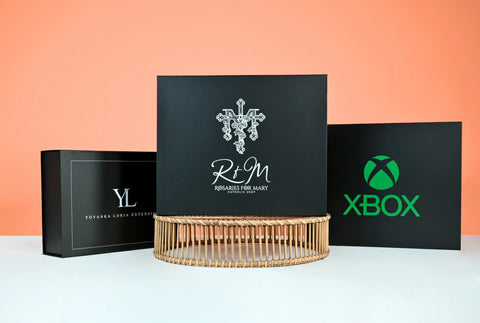Our groceries, shopping hauls and eCommerce orders all have one thing in common - they are all wrapped in different kinds of packaging. Although some stores implement a no plastic policy and encourage using eco-bags, there are still other products that need to be wrapped with plastic which still ends up as waste.
We understand how difficult it can be for business owners to find packaging that matches their products. But, with the packaging industry’s evolution, plastic-free alternatives are also increasing - like small boxes.
This blog will discuss how these carboard boxes can help Australian businesses minimise their environmental impact.
The Environmental Impact of Packaging
Based on the data provided by the Department of Climate Change, Energy, the Environment and Water (DEECW) website, there was a recorded 67.4 tonnes of packaging used in the market from 2020-21. Of the 67.4 tonnes of packaging, this is the breakdown of their characteristics:
- 86% were recyclable
- 35% could have been recycled but failed to be collected or processed
- 44% were thrown into landfills
Statistically speaking, if all product packaging were 100% recycled from 2020-201, DEECW estimated that Australia’s greenhouse gas (GHG) emissions could have been reduced by 2.2 million tones - similar to eliminating 740,000 cars each year.
Read more: Mailing Boxes Australia: The Ultimate Guide to Efficient Packaging
The Power of Small Boxes
Despite its size, small box packaging comes with many benefits. When you use a small box for your products, it directly translates to lesser packing materials such as tape, staples or glue and even fewer void fillers used.
We often resort to using medium or large boxes because of the convenience they offer - we can pack the items in any way we want. But, when we start being conscious of our material consumption and try to be innovative, we can discover various arrangements that can make items fit in a small box.
Another benefit of using small-box packaging is that it reduces the shipping costs when shipping products to customers and when receiving bulk orders of these mailing boxes. It is also an advantage to your warehouse’s space since you can allocate the other areas for more essential equipment.
One business that can benefit from using small boxes is apparel sellers. They can experiment with different ways of folding clothes to fit shirts, pants, or underwear in a limited space without damaging them. Another business that can explore trying to switch box sizes is a business selling small cosmetic devices that need to be assembled and contain small parts.
Reduce
You can reduce your packaging usage by taking measurements of all your products and carefully selecting boxes and bags that perfectly fit them. You need to do your research beforehand and ask for a second opinion so you can order the accurate dimensions.
If some of your products are fragile, consider buying box supplies that have enough room to fit in protective materials.
Recycle
On your business’s website or social media, include helpful information on how your customers can recycle the small box packaging.
1. Share best disposal practices -
Include a concise and complete instruction on how your customers can recycle their paper bags. Specify what other uses it can serve. For example, “This paper bag is durable enough to hold dry goods.” That is one way of encouraging them to find other purposes for packing materials.
2. Write a blog or create an infographic on recycling boxes-
Recycling a bag is straightforward. However, people sometimes need graphic guides on how to recycle boxes due to the different designs and features that every box has.
3. Specify what items are compatible with your plain box-
Not all boxes are food-grade or safe for medical items. It would be easier for your customers to recycle the boxes when they know what items they can store if they decide to use them as home or office storage.
Read more: Benefits of Using Cardboard Mailing Box for Shipping
Going Beyond the Box
Cardboard boxes and reusable bags are not the only eco-friendly packaging in Australia. Here are some of the sustainable packaging that you can use in your business:
Compostable
Compostable packaging boxes is made from bio-materials like sugar cane, corn, and bamboo. They decompose and integrate with the environment without any toxic remnants.
Corrugated
Boxes made from corrugated cardboard contain fibres from trees and recycled old box containers. What makes corrugated cardboard a highly reliable material is that it can be reused up to 10 times to manufacture new containers.
Cellulose
A compostable and biodegradable alternative to plastic, cellulose packaging is made from natural resources like cotton, wood or hemp.
Conclusion
The widespread adoption of small-box packaging in Australian businesses can play a significant role in reducing the environmental impact of packaging. By opting for smaller packaging solutions, businesses can minimise the use of materials such as tape, staples, and void fillers, leading to decreased waste generation.
To further enhance sustainability efforts, businesses can focus on reducing packaging usage through careful product measurements, promoting recycling practices among customers, and exploring alternative eco-friendly packaging options such as compostable materials, corrugated cardboard, and cellulose-based packaging.
By prioritising environmentally conscious packaging choices, Australian businesses can contribute to mitigating greenhouse gas emissions, conserving resources, and fostering a more sustainable future.
Join the movement towards sustainable packaging practices today!





Comments (0)
There are no comments for this article. Be the first one to leave a message!